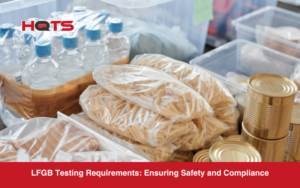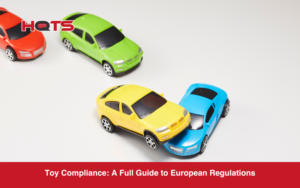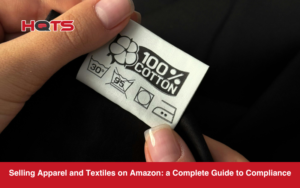A GMP audit in quality control refers to good manufacturing practices and it ensures the quality and safety of your products.
It is a set of standards and principles your business should work to in order to achieve the best results for your products. When applied to the food industry, it means you will be striving to produce the best food possible to meet your customers’ expectations and be as efficient as you can as a food supplier.
GMP can be implemented through audits referred to in the industry as GMP audits which help reduce risk, save money, uphold a company’s reputation and carve out a competitive edge in an increasingly competitive market.
What is GMP audit checklist?
According to the FDA, the GMP audit should comprise of nine parts or steps. However, these steps are not a plan, but more of an assessment tool to follow that will assist with your preparation for an audit. The steps are as follows:
Personnel
This covers reporting staff illnesses, policy on dress code, personal hygiene standards, rules on eating and drinking at work, potential contaminating items, food handling techniques and identity of supervisory staff who ensure all of the above is met.
Plant and Grounds
This includes storage safety, roads and parking areas at the premises and all other areas around the plant to ensure they are free of litter and obstacles that could potentially attract pests and cause filth problems. There also needs to be space for equipment and lightbulbs and glass need to be protected as to eliminate potential contamination problems. Finally, ventilation should also be checked to ensure good airflow.
Sanitary Operations
Cleaning practices and frequency need to be monitored with all equipment cleaned regularly and recorded each time. Toxic materials such as lubricants should be identified and stored correctly to avoid contamination and a pest control programme should be established. Single-use paper should be used correctly and disposed of according to standards to avoid contamination.
Sanitary Facilities and Controls
This includes water supply which should be from a potable, sanitary source and steam added to food should be chemical-free. The correct water temperature and pressure should be used and plumbing completed correctly as not to contaminate food. Sewage and drainage should be functioning properly and rubbish managed to minimise odours that could attract pests. Piping should also be working correctly and toilets/restrooms should be clean with hand washing facilities.
Equipment and Utensils
These should be cleanable and properly installed and maintained. Food contact surfaces should resist corrosion and be made of non-toxic materials. Freezers and cold storage units must have a temperature monitoring device to clearly show the inside temperature of the compartment where human food is stored.
Processes and Controls
Adequate sanitation must be the priority for all operations involved with the manufacturing, processing, packing and holding of human food. Quality control operations must be adopted to ensure the food is suitable for human consumption. Raw materials and ingredients should be inspected and tested. The environment should be maintained and controlled to ensure cleanliness and prevent the growth of undesirable microorganisms. All measures should be taken to protect against food contamination with a host of other processes to ensure quality and safety.
Warehousing and Distribution
Food should be stored and transported in a way that protects against contamination too. You should document how food is being rotated. Food containers should be clearly labelled to state contents and any allergens. Products that have been returned from distribution should naturally be assessed for safety.
Holding and Distribution of Human Food By-Products for Use as Animal Food
Everything should be constructed of the appropriate material, cleaned and maintained to uphold standards and protect against contamination. Products must be labelled correctly while being held for distribution. Shipping containers and bulk vehicles should be examined to protect against contamination before being used for distribution.
Defect and Action Levels
Manufacturers, processors and holders of any food should utilise quality control operations to avoid natural or unavoidable defects to the lowest level. The mixing of defective food that is considered adulterated is not permitted.
How to prepare for a GMP audit
Before you launch your GMP food audit, there are several things you should consider like what it will involve and how you can best prepare for what’s ahead. This is where your audit checklist, or audit tool, which we have already mentioned above will come in handy so you can tick things off.
The main things to consider are cleanliness, pest activity, food handler hygiene, foreign matter control, storage practices, premises construction, traceability, allergen management and chemical control. HACCP records will also come in handy when carrying out your preparation.
What are the 5 main components of good manufacturing practice?
One of the most important aspects of GMP is quality control. You shouldn’t just be aiming at finished product testing, but rather implementing good practices throughout your supply chain at every stage of production and processing.
There are five well-known Ps involved when thinking about good manufacturing practices which can help to ensure you meet customer expectations by providing the best products. They are as follows:
- People
- Premises
- Processes
- Products
- Procedures
How do you maintain GMP?
Maintaining GMP standards will of course be challenging but it’s essential for your business. It’s important to remember that it isn’t a one-off action and more of a process at several stages of a product’s lifecycle to ensure best practices and quality as a result. It all starts, however, with the manufacture of safe products in accordance with regulatory guidelines. The world is always changing and evolving so it’s important to stay on top of your GMP audit standards and monitor your performance and conditions regularly. A third-party quality assurance partner is an effective way of employing all of the above best practices.
About HQTS
With over 25 years of experience in quality assurance, HQTS is ready to help your import and export business build a robust quality assurance plan. Our many service locations are prepared to be your one-stop-shop for inspection needs. Including, production monitoring, pre-shipment and sorting inspections and everything in between. Contact us today to find out how we can help you navigate your current quality control challenges.




